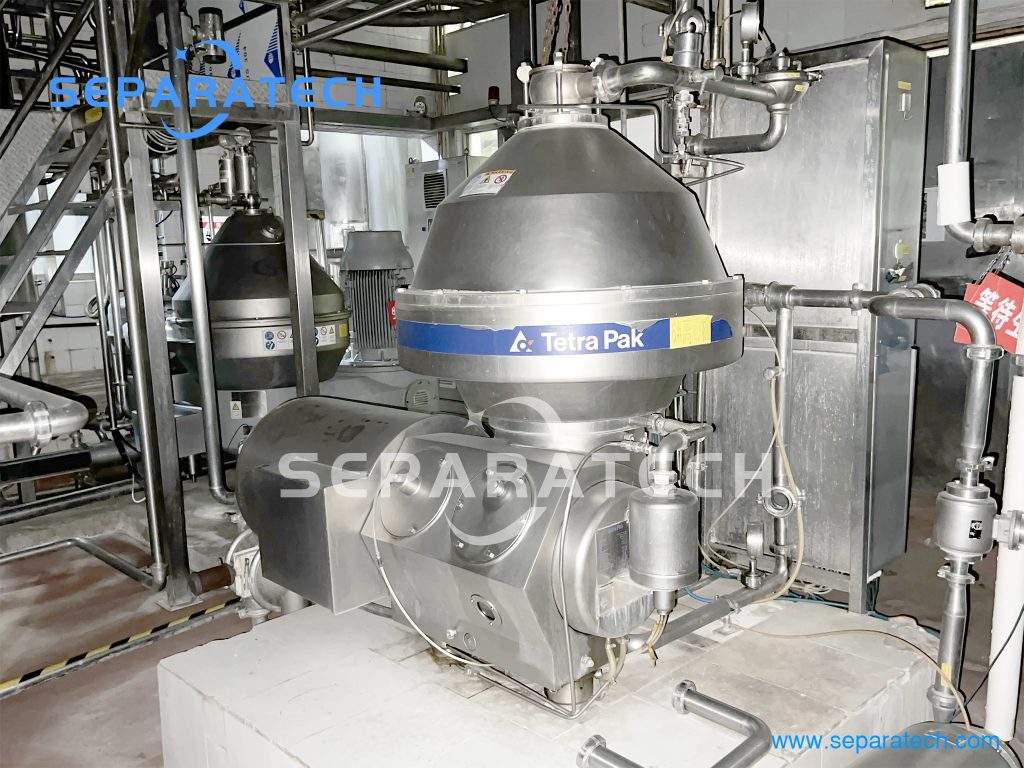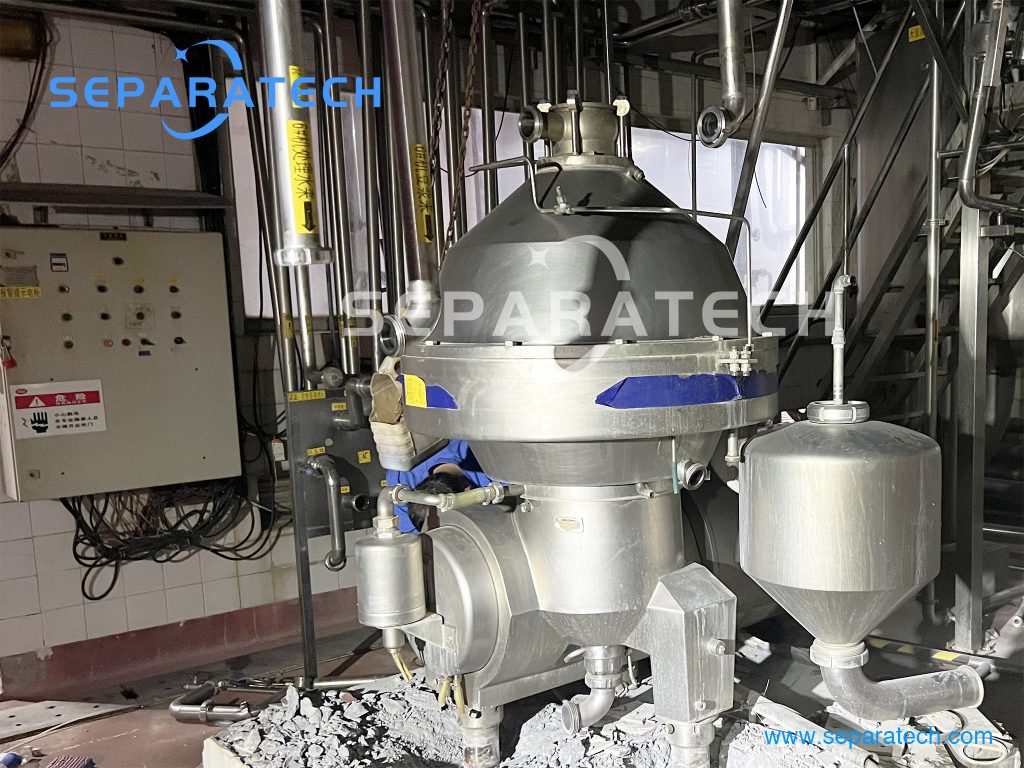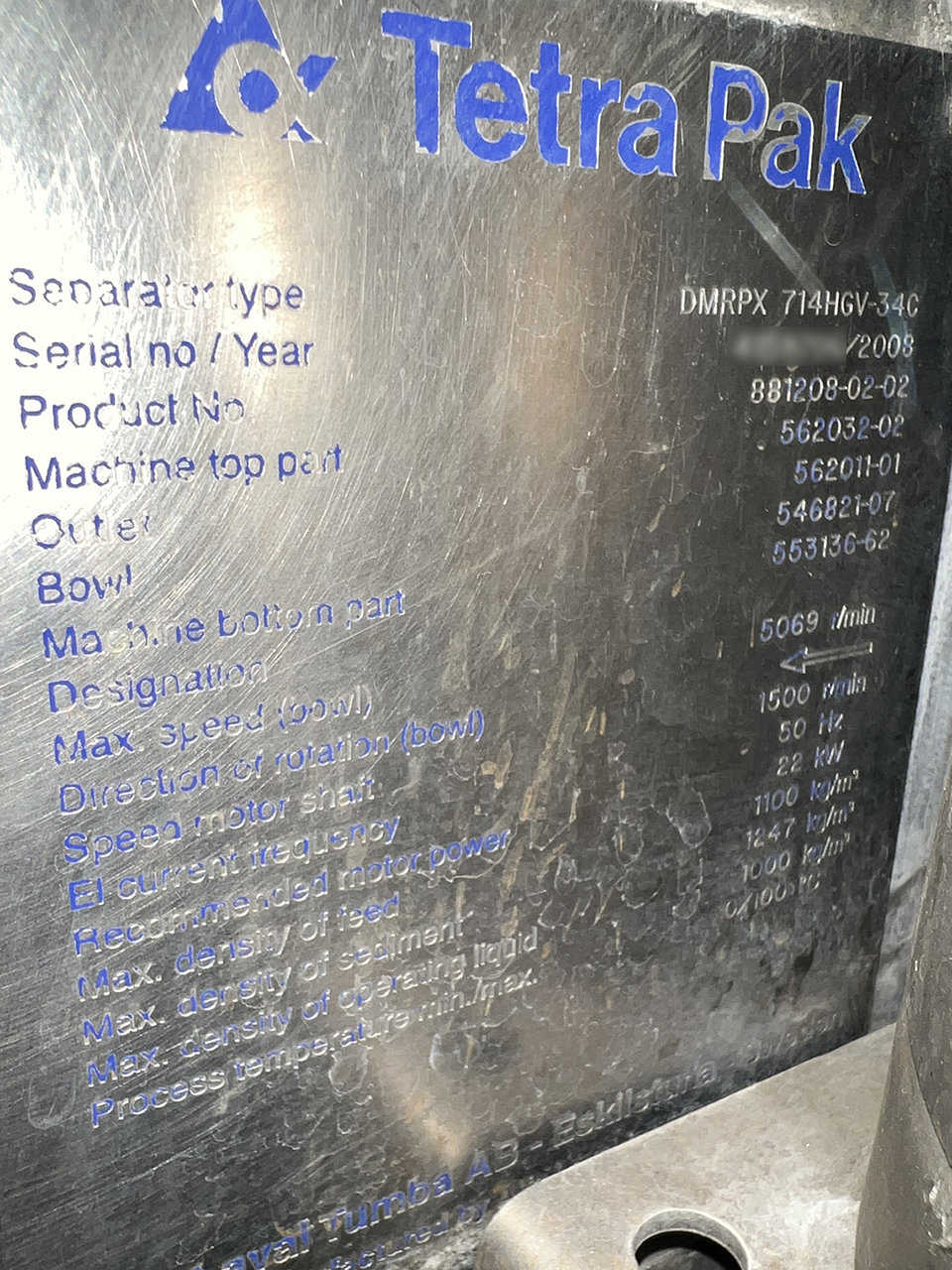Used Tetra Pak Disc Separator DMRPX714HGV-34C

CONTENTS
Disc Separator DMRPX714HGV-34C
Disc Separator DMRPX714HGV-34C Applications
Disc Separator DMRPX714HGV-34C is special designed for milk clarification. The main purpose of this process is to remove impurities from milk. If process conditions are favorable, there will also be an efficient reduction in the amount of leucocytes and bacteria.
All centrifuges perform as clarifiers, but normally only machines with a high hydraulic capacity are used for this application. The clarifier can operate either with cold milk, below 8°C (46°F), or hot milk, 50 to 60°C (122 to 140°F). Its efficiency with smaller particles will increase with the temperature. There are no standards for the amount of impurities permitted in the milk, but standards for leucocyte and bacteria levels are common in many countries.
Technical specifications of Disc Separator DMRPX714HGV-34C
Manufacturing year: 2008
Max.flow-rate: 35,000 l/h
Bowl speed: 5069 rpm
Motor: 22 Kw
Process temperature range: 0–100°C (32–212°F)
Cleaning -in-place
High hygiene in connection with a good processing procedure is a necessity in all food industries today. The consumers make heavy demands upon the quality and the keeping quality of the food products. Mechanization and automation have made great progress and the cleaning procedures, previously mainly performed by manual work, have become an integrated part in modern processing. This holds true for the dairy industry as well.
The chosen methods of cleaning and disinfection of the processing equipment is of outmost importance. During processing, the milk is generally subjected to some kind of heating. The main constituents in the milk, protein-fat lactose and mineral salts, are influenced by the heating or other treatment and precipitate on the treating surfaces. The created layer must be removed when cleaning the equipment in order to secure high grade products.
In that connection questions like:
– which are the constituents in the “dirt”?
– how much?
– in which state are the constituents?
– aiming at physical, chemical and/or biological cleaning?
– etc.
have to be put forward. The answers to these and similar questions will give cleaning times, temperatures, flow rates as well as detergents and sequencies.
It is important that the cleaning methods are optimized in order to give approved results at lowest costs and load on sewage system and environment.
The check of the cleaning result must be looked upon as an important part of the cleaning work . This checking can be divided into an ocular inspection and a bacteriological check. Due to the automation, the processing lines are now less available for ocular inspection. That means that more intensive bacteriological checking, concentrated to strategic places in the processing line, e g sections
with vaccuum where risk for infection is greater, will substitute the ocular inspection. As a rule, the counting of coliform bacteria is used as an indicator of the cleaning result.


